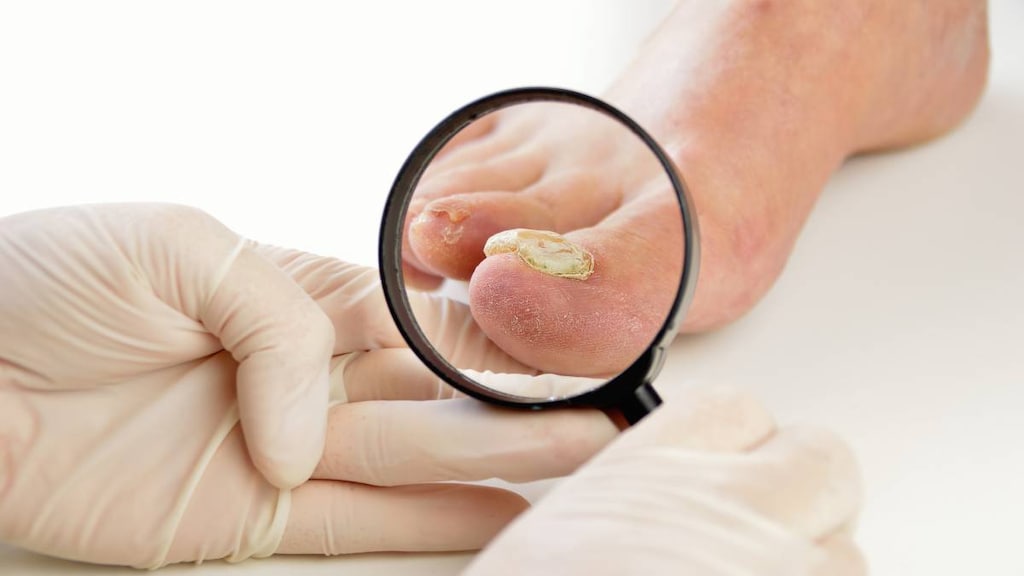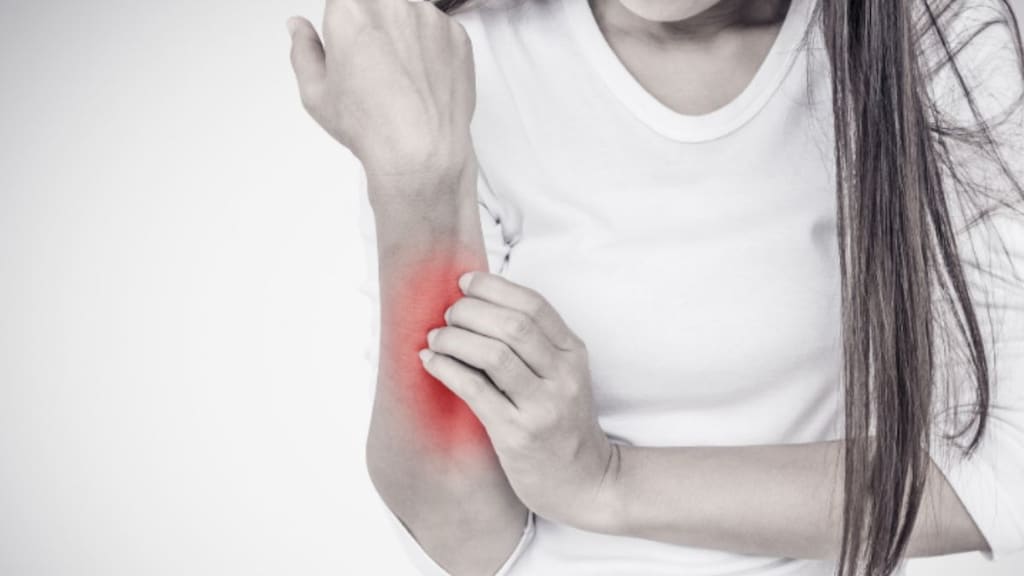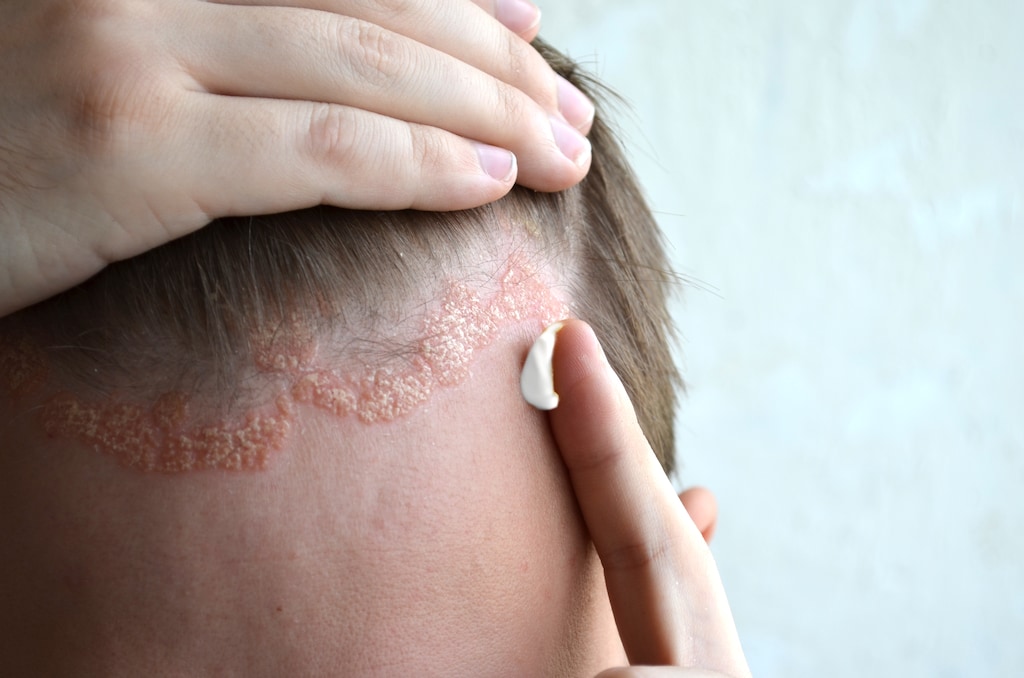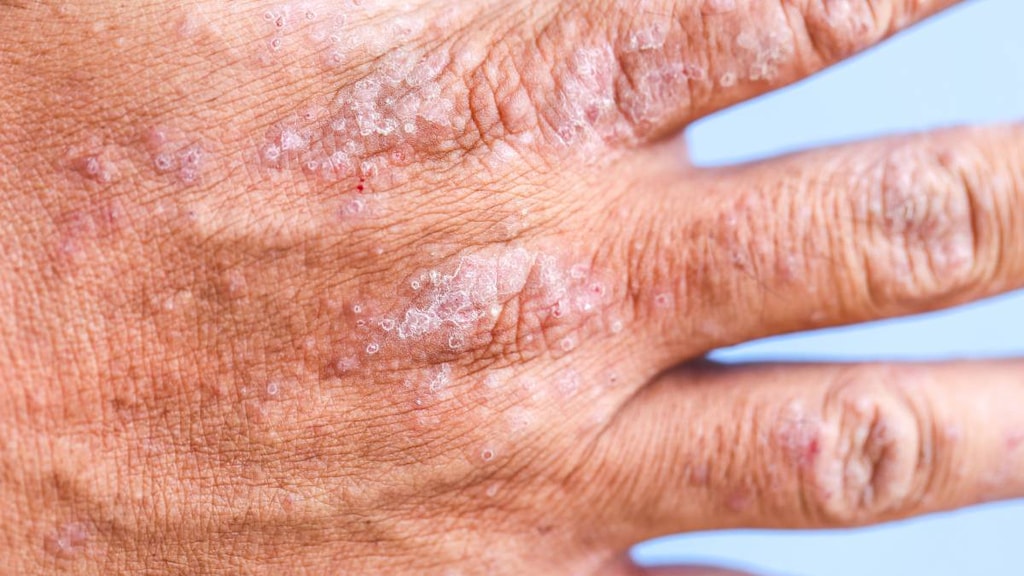Dosage Forms
Excipient information presented when available (limited, particularly for generics); consult specific product labeling.
Cream, External, as diacetate:
ApexiCon E: 0.05% (30 g, 60 g) [contains cetyl alcohol, propylene glycol]
Psorcon: 0.05% (60 g) [contains cetyl alcohol, propylene glycol]
Generic: 0.05% (15 g, 30 g, 60 g)
Ointment, External, as diacetate:
Generic: 0.05% (15 g, 30 g, 60 g)
Pharmacology
Mechanism of Action
Topical corticosteroids have anti-inflammatory, antipruritic, and vasoconstrictive properties. May depress the formation, release, and activity of endogenous chemical mediators of inflammation (kinins, histamine, liposomal enzymes, prostaglandins) through the induction of phospholipase A2 inhibitory proteins (lipocortins) and sequential inhibition of the release of arachidonic acid. Diflorasone has high range potency.
Pharmacokinetics/Pharmacodynamics
Absorption
Negligible, around 1% reaches dermal layers or systemic circulation; occlusive dressings increase absorption percutaneously
Metabolism
Primarily hepatic
Use: Labeled Indications
Dermatoses: Treatment of inflammation and pruritic symptoms of corticosteroid-responsive dermatoses (high to very high potency topical corticosteroid)
Contraindications
Hypersensitivity to diflorasone or any component of the formulation
Dosage and Administration
Dosing: Adult
Corticosteroid-responsive dermatosis: Topical: Apply sparingly 1 to 3 times daily. Therapy should be discontinued when control is achieved; if no improvement is seen, reassessment of diagnosis may be necessary.
Dosing: Geriatric
Refer to adult dosing.
Administration
Apply the smallest amount that will cover affected area. For topical use only; avoid contact with eyes and mucous membranes. Do not apply to face or intertriginous areas. Do not use if there is atrophy at the treatment site. Minimize contact to nonaffected areas of the body. Wash hands after use.
Storage
Store at controlled room temperature 20°C to 25°C (68°F to 77°F).
Drug Interactions
Aldesleukin: Corticosteroids may diminish the antineoplastic effect of Aldesleukin. Avoid combination
Corticorelin: Corticosteroids may diminish the therapeutic effect of Corticorelin. Specifically, the plasma ACTH response to corticorelin may be blunted by recent or current corticosteroid therapy. Monitor therapy
Deferasirox: Corticosteroids may enhance the adverse/toxic effect of Deferasirox. Specifically, the risk for GI ulceration/irritation or GI bleeding may be increased. Monitor therapy
Hyaluronidase: Corticosteroids may diminish the therapeutic effect of Hyaluronidase. Management: Patients receiving corticosteroids (particularly at larger doses) may not experience the desired clinical response to standard doses of hyaluronidase. Larger doses of hyaluronidase may be required. Consider therapy modification
Ritodrine: Corticosteroids may enhance the adverse/toxic effect of Ritodrine. Monitor therapy
Adverse Reactions
Frequency not defined. Reactions listed are based on reports for other agents in this same pharmacologic class and may not be specifically reported for diflorasone. Diflorasone is classified as a potent topical steroid.
Central nervous system: Burning sensation
Dermatologic: Acneiform eruption, allergic contact dermatitis, atrophic striae, folliculitis, hypertrichosis, hypopigmentation, maceration of the skin, miliaria, perioral dermatitis, pruritus, skin atrophy, skin irritation, xeroderma
Endocrine & metabolic: HPA-axis suppression (children at greater risk)
Infection: Secondary infection
<1%, postmarketing and/or case reports: Acne rosacea (Hengge 2006), aggravation reaction (cutaneous candidiasis, herpes, dermodex) (Hengge 2006), cataract (Hengge 2006), dermal ulcer (Hengge 2006), glaucoma (Hengge 2006), hirsutism (Hengge 2006), hyperpigmentation (Hengge 2006), Kaposi's sarcoma (reactivation) (Hengge 2006), nonthrombocytopenic purpura (Hengge 2006), ocular hypertension (Hengge 2006), psoriasis flare (rebound) (Hengge 2006), purpura (Hengge 2006), skin photosensitivity (Hengge 2006), spontaneous star-shaped scar-like lesions (Hengge 2006), telangiectasia (Hengge 2006), tinea (tinea incognito) (Hengge 2006)
Warnings/Precautions
Concerns related to adverse effects:
- Adrenal suppression: May cause hypercortisolism or suppression of hypothalamic-pituitary-adrenal (HPA) axis, particularly in younger children or in patients receiving high doses for prolonged periods. HPA axis suppression may lead to adrenal crisis.
- Contact dermatitis: Allergic contact dermatitis can occur, it is usually diagnosed by failure to heal rather than clinical exacerbation.
- Immunosuppression: Prolonged use may result in fungal or bacterial superinfection; discontinue if dermatological infection persists despite appropriate antimicrobial therapy.
- Kaposi's sarcoma: Prolonged treatment with corticosteroids has been associated with the development of Kaposi's sarcoma (case reports); if noted, discontinuation of therapy should be considered.
- Ocular effects: Subcapsular cataracts, glaucoma (with possible nerve damage), and increased intraocular pressure have been reported with topical use.
- Skin reactions: Local adverse effects (eg, atrophy, striae, telangiectasias, burning, itching, irritation, dryness, folliculitis, acneiform eruptions, hypopigmentation, perioral dermatitis, allergic contact dermatitis, secondary infection, and miliaria) may occur. Reactions may not be reversible and may be more likely to occur with prolonged use, higher potency corticosteroids, and occlusive dressings.
- Systemic effects: Topical corticosteroids may be absorbed percutaneously. Absorption of topical corticosteroids may cause manifestations of Cushing's syndrome, hyperglycemia, or glycosuria. Absorption is increased by the use of occlusive dressings, application to denuded skin, or application to large surface areas.
Disease-related concerns:
- Skin infections: Use appropriate antibacterial or antifungal agents to treat concomitant skin infections; discontinue diflorasone if infection does not resolve promptly.
Special populations:
- Pediatric: Children may absorb proportionally larger amounts after topical application and may be more prone to systemic effects. HPA axis suppression, intracranial hypertension, and Cushing's syndrome have been reported in children receiving topical corticosteroids. Prolonged use may affect growth velocity; growth should be routinely monitored in pediatric patients. Diflorasone is not FDA-approved for use in children.
Other warnings/precautions:
- Appropriate use: For external use only; avoid contact with eyes and mucous membranes. Do not use with occlusive dressing unless using for psoriasis or recalcitrant conditions. Do not use on the face, axillae, or groin or for the treatment of rosacea or perioral dermatitis.
Monitoring Parameters
Adrenal suppression with extensive/prolonged use (ACTH stimulation test, morning plasma cortisol test, urinary free cortisol test)
Pregnancy
Pregnancy Considerations
Topical corticosteroids are not recommended for extensive use, in large quantities, or for long periods of time in pregnant women.
Patient Education
- Discuss specific use of drug and side effects with patient as it relates to treatment. (HCAHPS: During this hospital stay, were you given any medicine that you had not taken before? Before giving you any new medicine, how often did hospital staff tell you what the medicine was for? How often did hospital staff describe possible side effects in a way you could understand?)
- Patient may experience dry skin, itching, or burning. Have patient report immediately to prescriber signs of high blood sugar (confusion, fatigue, increased thirst, increased hunger, passing a lot of urine, flushing, fast breathing, or breath that smells like fruit), signs of adrenal gland problems (severe nausea, vomiting, severe dizziness, passing out, muscle weakness, severe fatigue, mood changes, lack of appetite, or weight loss), signs of Cushing's disease (weight gain in upper back or abdomen; moon face; severe headache; or slow healing), signs of skin changes (acne, stretch marks, slow healing, or hair growth), skin thinning, vision changes, eye pain, severe eye irritation, or skin irritation (HCAHPS).
- Educate patient about signs of a significant reaction (eg, wheezing; chest tightness; fever; itching; bad cough; blue skin color; seizures; or swelling of face, lips, tongue, or throat). Note: This is not a comprehensive list of all side effects. Patient should consult prescriber for additional questions.
Intended Use and Disclaimer: Should not be printed and given to patients. This information is intended to serve as a concise initial reference for health care professionals to use when discussing medications with a patient. You must ultimately rely on your own discretion, experience, and judgment in diagnosing, treating, and advising patients.



